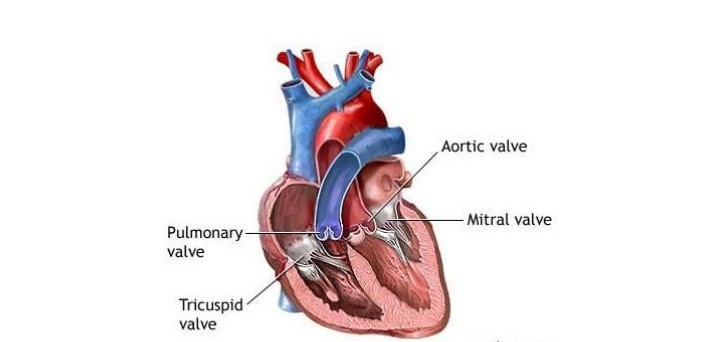
Tricuspid valve diseases: The Tricuspid Valve is a three-leaflet valve located between the right atrium and right ventricle of the heart, ensuring one-way blood flow. It is critical for right heart functions. Failure of the tricuspid valve to function properly can lead to serious heart and liver problems.
What Are Tricuspid Valve Diseases?
Congenital Tricuspid Valve Diseases
These diseases are divided into two main groups: congenital (present at birth) and acquired (developed later). The most common congenital diseases include:
- Ebstein’s Anomaly: Characterized by the tricuspid valve being positioned lower than normal. This condition negatively affects the functions of the right ventricle.
- Tricuspid Atresia: A condition where the tricuspid valve is completely closed or undeveloped at birth. This condition prevents adequate blood flow from the heart to the lungs and requires early surgical intervention.
Acquired Tricuspid Valve Diseases
Acquired diseases often develop as a result of other heart valve diseases. Particularly left heart valve diseases (especially mitral valve diseases) can cause dysfunction in the tricuspid valve.
The most common acquired problems are:
- Tricuspid Regurgitation: Backflow of blood due to closure problems.
- Tricuspid Stenosis: Narrowing of the valve, making it difficult for blood to pass from the right atrium to the right ventricle.
Symptoms of Tricuspid Valve Diseases
The symptoms of these diseases usually appear insidiously and worsen as they progress. The most common symptoms are:
- Shortness of breath
- Fatigue and weakness
- Liver enlargement and dysfunction (cirrhosis in advanced stages)
- Fluid accumulation in the abdomen (ascites)
- Jaundice
- Edema in feet and legs
These symptoms may indicate heart failure and should be evaluated by a cardiology specialist.
Diagnostic Methods for Tricuspid Valve Diseases
The most important diagnostic tool is echocardiography. Both transthoracic and transesophageal echocardiography are used to evaluate the structure and function of the tricuspid valve in detail.
In necessary cases, cardiac MRI and right heart catheterization can also aid in diagnosis.
Treatment of Tricuspid Valve Diseases
In Congenital Diseases
In cases such as Ebstein’s anomaly or tricuspid atresia, surgical intervention is usually planned in the newborn or early childhood period. Treatment is shaped according to the severity of the disease and the general condition of the patient.
In Acquired Diseases
Acquired tricuspid diseases are usually not seen in isolation; they often occur together with mitral valve disease. While addressing the main valve problem, the tricuspid valve should also be evaluated simultaneously.
Intervention on the tricuspid valve is recommended especially in the following situations:
- Expansion around the valve (annulus)
- Increased lung pressure
- Rhythm disorders (e.g., atrial fibrillation)
Tricuspid Valve Surgery
Tricuspid Valve Repair
The most commonly applied method is valve repair. In this procedure, the frame called the annulus, where the valve attaches to the heart, is narrowed. This ensures proper closure of the valve leaflets.
Tricuspid Valve Replacement
If the valve leaflets are severely calcified or too deformed to repair, the valve is replaced.
- Preferred option: Biological valves
- In rare cases: Mechanical valves (especially in young patients or when a long-lasting solution is sought)
Since these types of valve diseases usually develop along with other heart valve problems, early diagnosis and a multidisciplinary approach are vital. Detailed evaluations with echocardiography and appropriate treatment options significantly improve the patient’s quality of life.
